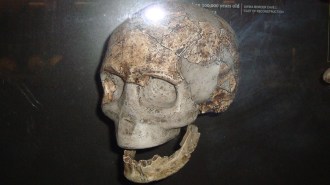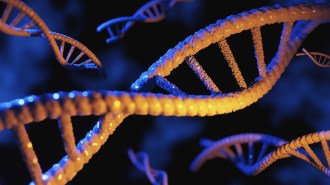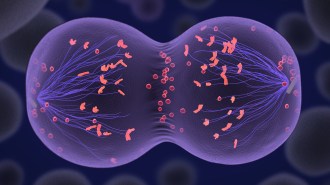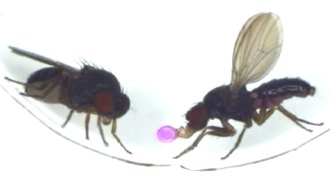Contagious cancer found in clams
Third example of transmissible malignancy poses no threat to people
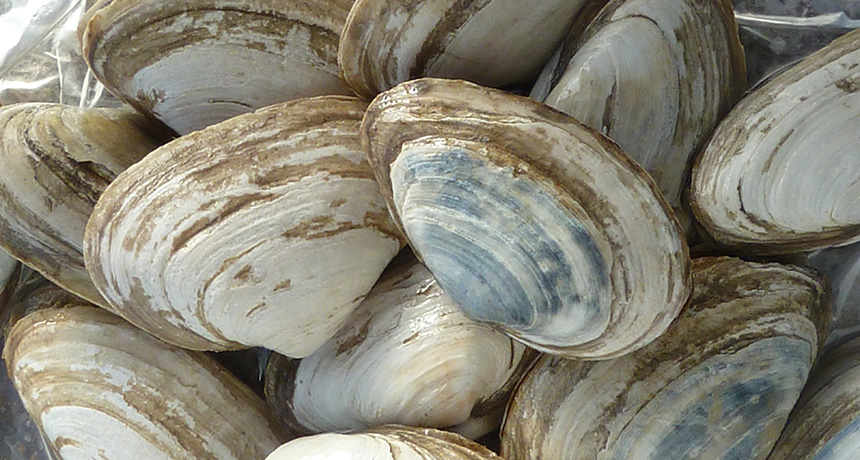
CLAMTASTROPHE Soft-shell clams (Mya arenaria) can get a contagious form of leukemia when cancer cells migrate from one clam to another, a new study shows. The clam disease poses no risk to humans.
Michael J. Metzger
- More than 2 years ago
A leukemia-like disease in soft-shell clams is a contagious cancer that spreads from clam to clam, a new study finds.
The disease probably originated in a single soft-shelled clam at least 40 years ago, researchers report April 9 in Cell. Cancer cells somehow migrated to other clams and infected them, eventually spreading the disease up and down the eastern North American seashore from Canada’s Prince Edward Island to Chesapeake Bay.
It is not clear how the disease moves or whether the cancer cells can infect other mollusks. What’s certain is that the disease is not dangerous to people. “It’s only a shellfish health issue. It’s not a human health issue,” says Bruce Barber, an invertebrate pathologist at Eckerd College in St. Petersburg, Fla.
Only two other transmissible cancers have ever been described: a nonfatal venereal tumor in dogs and a facial tumor that has decimated Tasmanian devil populations (SN: 4/20/13, p. 10).
The clam disease was first noticed in the 1970s when soft-shell clams (Mya arenaria) in Chesapeake Bay and Maine started dying in large numbers. Scientists originally thought that pollution in the water was responsible, Barber says. But researchers soon noticed that the cancer could spread from sick clams to healthy ones even in clean water. During the 1980s and ’90s, scientists began testing whether a virus might be involved.
Carol Reinisch, a marine biologist at Environment Canada in Burlington, suspected that the clam leukemia was spread by retroviruses. Retroviruses, such as HIV and several types of leukemia-causing viruses, carry their genetic information in RNA. When the retroviruses infect cells, they make a DNA copy of their genomes and insert the copies into the host’s DNA. The host then produces viruses that can go on to infect other cells. In 2009, Reinisch contacted Stephen Goff, a virologist at Columbia University who studies retroviruses that cause cancer in mice, for help.
Last year, Goff and colleagues reported that clams weren’t infected with a retrovirus, but they did carry a retroelement called Steamer. Retroelements — also called transposable elements or jumping genes — are similar to retroviruses in that they are composed of RNA that is copied into DNA and inserted into a host’s genome. But unlike retroviruses, transposable elements don’t move to other cells or organisms.
Story continues after photo
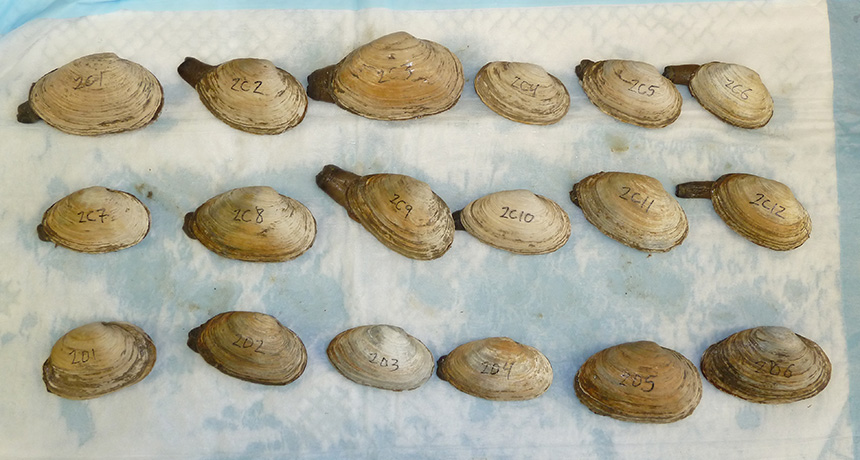
Healthy clams may carry two to 10 copies of Steamer, but sick clams have 150 to 300 copies. Still, it wasn’t clear whether or how Steamer gave the clams cancer. So Goff’s group examined where in the clams’ genome it landed, sampling clams from multiple locations along the Eastern seaboard.
“That’s when we got thrown for a loop,” Goff says. “The integration sites in tumors were the same all up and down the coast. That’s impossible. That’s not the way retroelements work.”
More investigation revealed that all of the cancer cells were nearly genetically identical. But the cancers were genetically different from the clams they were living in. Those findings indicate that the cancer cells themselves spread from clam to clam.
The evidence that the leukemia-like disease is contagious is “completely convincing,” says Elizabeth Murchison, a geneticist at the University of Cambridge who studies the transmissible cancers that affect Tasmanian devils and dogs. “It really shows that this type of disease can occur in unexpected ways.”
Dogs pass the cancer during mating. Tasmanian devils bite each other, transferring cancer cells in the bite. But clams don’t bite each other, nor do they mate the way dogs do. Instead, the researchers speculate, cancer cells may float through seawater and get into the clam as the mollusks filter the water to feed. That possibility remains to be tested.
Exactly what the diagnosis will mean for the clams is unknown. “The results are compelling and interesting but need follow-up,” says S. Anne Boettger, a physiological ecologist at West Chester University of Pennsylvania. Researchers need to know more about how the cancer cells get in and out of the clams and how the retroelement is involved in the disease, she says.
Fishermen and ecologists are concerned with how to stop the cancer. Chemotherapy is commonly used to treat cancer in humans and dogs, but “dumping something like a chemotherapeutic agent into the water is probably not a good way of dealing with this,” Boettger says. Instead, the solution may be identifying clams that are resistant to the disease and breeding them.
Editor’s note: This story was updated on April 21, 2015, to note that healthy clams may carry two to 10 (instead of two to five) copies of Steamer.


